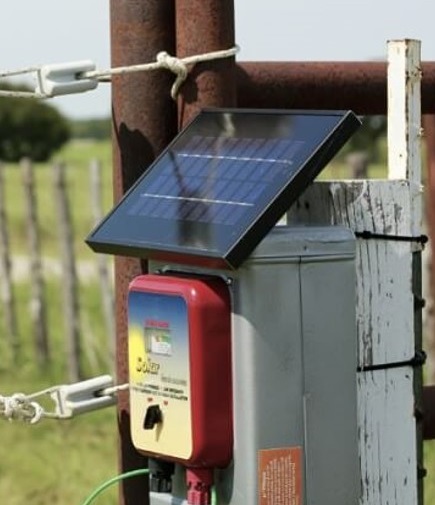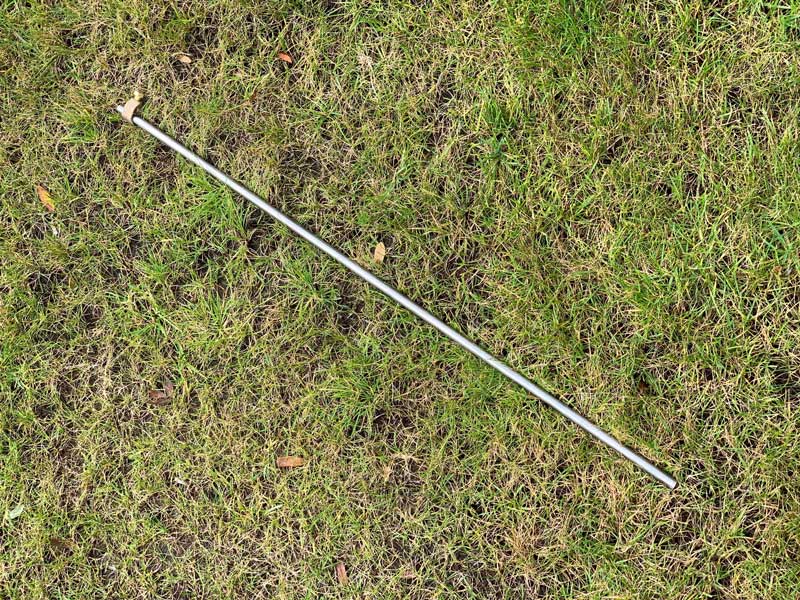Electric Fences as Bear Deterrents
Supplies
ENERGIZER
Where standard household power is available, energizers that plug into a 110V AC outlet are preferred. Where standard household power is not readily available, energizers powered by an integrated solar panel, or by a battery, are popular. Whenever possible, use an energizer putting out at least of 0.5 joules of energy. (Note that some manufacturers list "stored energy" rather than output energy. In that case, use an energizer with at least 0.7 stored joules.) Energizers should provide at least 35 shocks per minute, preferably 40 – 45 shocks per minute. Voltage at the fence should be at least 5000-volts, preferably 6000 – 7000 volts.
- The smallest, lightest, most portable energizers – favored by people traveling to remote camps – are often powered by D-cell batteries, and typically put out less energy. If portability is an utmost consideration, be sure to use an energizer putting out at least 0.11 joules (preferably at least 0.20 output joules).*
CONDUCTORS
ADF&G recommends a minimum of 3 horizontal fence wires (5 is better) with the lowest wire 10-12" above the ground and the highest wire 40" above the ground.
- Solid aluminum wire is excellent for permanent fences; it conducts electricity well and may have the best durability and life span in many climates. 12-14 gauge recommended.
- Galvanized steel wire, often used in drier climates, is not recommended in wetter climates, as it may rust within a few years (rust is a poor conductor).
-
Polywire and polytape – both made of plastic threads with conductive metal threads woven in – are popular choices, especially for temporary fencing. Polywire or polytape with stainless steel conductive threads are suitable for short distances such as backyard chicken coops; for longer distances, such as pastures, aluminum or copper threads may be preferable. Because the plastic degrades with exposure to UV radiation, polywire and polytape have a life span of about five years.
- Polywire with six or more conductive threads is preferable to polywire with only three.
- Polytape has the advantage of being more visible than polywire; however, it is more susceptible to wind or wet snow.
- Poultry netting is woven plastic with the horizontal fence strands made of polywire. Some poultry netting is designed with both positive and negative (grounded) horizontal wires; this can be especially beneficial on surfaces that are not very conductive, such as on sand or gravel, or on dry or frozen soil. Poultry netting usually comes with a limited number of push-in posts; to use it as a bear fence, you will want to add an extra push-in post between each existing post in the net.
FENCE POSTS
A fence post every 7-10 feet is recommended.
- Wooden fence posts: Popular for permanent installations.
- Metal T-posts: Good for permanent and some temporary installations.
- Plastic "step-in" posts: Good for temporary fences; no insulators are necessary.
INSULATORS AND GATE HANDLES
-
Insulators that are appropriate for the type of posts being used
- For wire run along/outside of an existing metal fence, "offset insulators" will keep the charged electric fence wire away from your existing fence.
- Corner insulators may be desired where your fence must make a sharp turn.
- Gate handles for openings in the fence.
GROUNDING ROD, ETC
-
Grounding rod: Galvanized steel grounding rod preferred. Copper or copper-plated rods conduct electricity well but if used in combination with aluminum fence wire, electrolysis may become an issue. In less-conductive soil, using two or three grounding rods may be beneficial.
- For permanent fences, most suppliers recommend using one or more grounding rods at least 6 feet long.
- Temporary fences: A 4-foot length of ½" conductive metal rod may be sufficient. New rebar is sometimes used and can work temporarily; however, it will corrode and corroded steel is a poor conductor.
-
Connector wire: to connect the grounding rod to the ground
 terminal of the energizer.
terminal of the energizer.
- Clamp: A grounding rod clamp will likely be needed. Some people improvise using a stainless steel hose-clamp instead.
FENCE TESTER
You must have a way to check that every wire on your fence is working. The energizer may be on and blinking but a wire can still have a short, compromising your fence.
- A multi-light fence tester has 5-8 lights that blink to indicate approximate voltage.
- Voltmeters can provide precise information about how your fence is functioning. Be sure to use a voltmeter designed for electric fence voltages, which can be 7,000 volts or more. Typical voltmeters from the hardware store may only handle a few hundred volts.
OPTIONAL
- Disconnect switch: These provide an easy way to turn your fence off. Some models are waterproof. A switch is also nice if your gate is not next to your energizer.
- Insulated wire: for connecting an energizer located indoors out to the fencing -- or for going under gates, connecting lines or fences that are not adjacent to one another.
*NOTE: Energy outputs are based on guidelines in the U.S.D.A. Forest Service Technical Report, 2007. Specifications for Portable Electric Fence Systems as Potential Alternative Methods for Food Storage. https://www.fs.fed.us/t-d/pubs/htmlpubs/htm07232305/index.htm#electric






